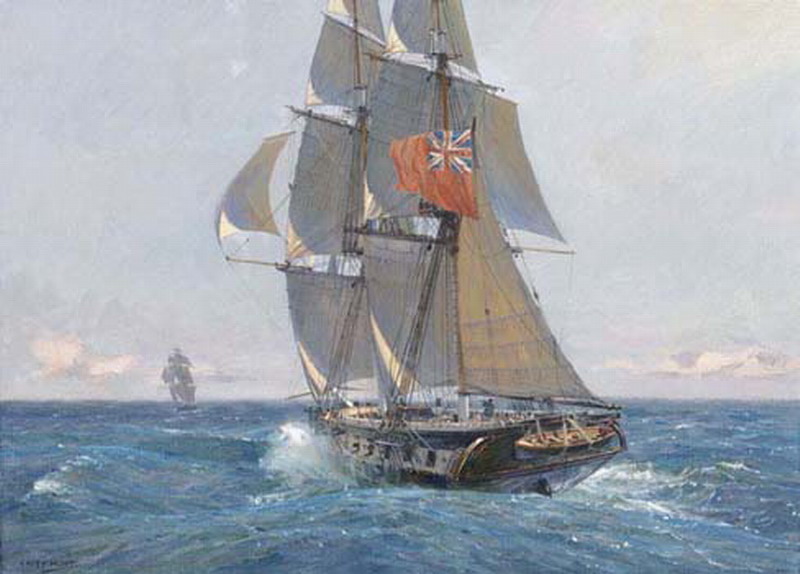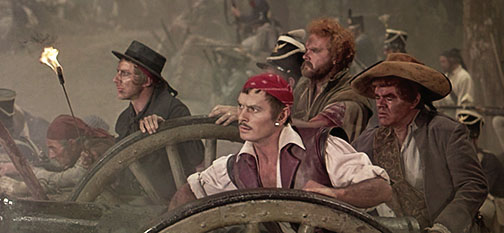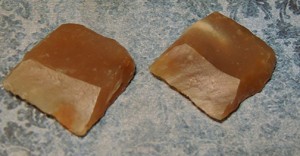The Case of the Spanish Prize Ship at Dauphin Island
December 8, 2014 in American History, general history, Louisiana History
Capt. Nicholas Lockyer of HMS Sophie was furious when he gave the order to weigh anchor just off Grande Terre island on Sept. 4, 1814. He and his fellow British officers had been released a couple of hours earlier from a sleepless night in a crude, dirty cell where they had been subjected to threats and jeers from mostly French Baratarians throughout the night. His demands to see Jean Laffite had been steadfastly ignored until the morning, when Laffite had shown back up, profusely apologizing for his men’s behavior towards them after he had left the British suddenly following their attempt to bribe him into service.
The day before, Lockyer had brought the Baratarian leader British letters seeking to entice him to join the British campaign to seize Louisiana, but now he could tell that visit had been a precious waste of time, and he had to report empty-handed to his commanding officer Sir William Percy of HMS Hermes.
First he had to return four pilots to the Balize at the mouth of the Mississippi, where he had picked them up a few days earlier to help him navigate the tricky tides of Barataria Pass at Grande Terre. Why he needed four pilots for this job is unknown.
New research has found Army Commanding Officer Charles Wollstonecraft at Fort St. Philip had gotten word from one of these pilots about the visit Sophie made to Laffite, as he wrote about it in a letter to Gen. Andrew Jackson on Sept. 13, 1814: “About a week past, a British Schooner, the Sophia (sic), took from the Balize four pilots, she sailed for Barataria bearing a white flag & in her passage drove two privateers on shore; the Capt. of the Sophia, landed under the flag, but was detained & his flag insulted: he was afterwards liberated, & last Thursday, returned the pilots to the Balize. Since Thursday (Sept. 8), no vessel has been in sight at the Balize, except our (Patterson and Ross) squadron [on their way to raid the Laffite stronghold at Grande Terre on Sept. 16.] The smugglers have been informed of the intended attack for some time past, & it is reported, are well prepared for it, & determined to stand out to the last; it is also said, that they are very strong, in men & vessels.”
Returning back to Lockyer and the Sophie’s voyage after dropping off the pilots, fortunes improved for the beleaguered captain when he spied one of those fast Baratarian pirate schooners in tandem with a captured Spanish prize ship not far from the mouth of the Mississippi. He ordered the men to tack toward the pirate, called everyone to battle stations, and smiled. Perhaps he could get at least one of those schooners for Percy.
According to American Major Howell Tatum’s daybook journal of General Andrew Jackson’s troops and activities, the Sophie did do battle with a Baratarian privateer which had earlier captured a Spanish ship. The privateer schooner seems to have eluded Lockyer’s grasp, probably by darting into the light draft shoal areas of the coastline where the heavy British warship dare not go. Shots may have been fired, but apparently none landed on the warship, as the Sophie bore no scars when she showed back up at Pensacola. The Baratarian prize master and crew of the heavy Spanish brig could not take advantage of the shoals without stranding, and the Sophie managed to get the prize to heave to, boarded her, and replaced Laffite’s Baratarian prize master and prize crewmen with British officer and sailors from the Sophie.
Lockyer was nettled that he hadn’t managed to get that privateer schooner for Percy, but the Spanish brig prize was at least something. The governor at Pensacola would likely be grateful to see it back with cargo intact. The trip to meet with Laffite wouldn’t have been a total loss. However, Lockyer didn’t count on the tricky waters near Dauphin Island. Absent a knowledgeable pilot, the prize master of the British ship didn’t know the lay of the shoals there, and the Spanish brig foundered__not far from the American garrison at Fort Bowyer. Lockyer could just look back in dismay as the Sophie sailed away to meet its deadline, hopeful that when the British attacked the fort in a few more days that the Sophie men could be retrieved safely. He decided it was best not to tell Percy about this misadventure until after they had captured the fort.
However, according to Tatum’s account, the Spanish prize ship was re-captured by an expeditionary party under the command of Major William Lawrence at Fort Bowyer. The prisoners taken on board were the British prize master, six British sailors, and three Spanish sailors (who had been among the original crew of the unnamed Spanish vessel).
No information is given for what transpired with the hapless prizemaster and crewmen from the Sophie, but they were likely sent to General Andrew Jackson at Mobile along with the three Spaniards. Jackson took one look at the Spaniards, and decided to use them as hostages against the irritatingly uncooperative governor of Pensacola, Don Mateo Gonzales Manrique, who had allowed the British to send armed war parties of British and Indians into the Mobile area.
On the night of September 3, 1814, a considerable firing of musketry was heard from the east side of Mobile Bay in the direction of the houses and mill of Jean D’Olive of the Town of Mobile. According to Tatum, early the next day, Jackson learned an attack had been made on d’Olive’s house, where an overseer and three black slaves had been taken and carried off for Pensacola by Indians and British of that place, part of Woodbine’s hostile corps. Another slave who had escaped related the information, and although a party was immediately sent in pursuit, due to the tedious delay in crossing the bay for want of a proper boat, the raiding party completed their mission in safety across the Perdido and escaped to Pensacola with their prisoners.
As the Indians previously had been allowed by the British to commit such acts of violence as scalp-taking and the like, Jackson determined to hold the luckless Spanish seamen from Penscola as hostages to insure the safe return of the men taken from d’Olive. In a scorching hot letter to Manrique, Jackson wrote that if anything happened to d’Olive’s men, the Spanish governor was assured that the hostages Jackson had would be made to answer, “Eye for Eye, Tooth for Tooth and Scalp for Scalp” for injuries suffered by the d’Olive group. Jackson was particularly incensed because a few days earlier, Manrique had sent him a letter in which he claimed he had armed those Indians who later had committed the attack, with his excuse being that he had armed them as a measure of precaution to meet any attempt of the American government to invade Pensacola as they had formerly done to Mobile. Jackson quite naturally considered this breakdown in trust as overwhelming evidence that the Spanish were placing themselves in a “belligerent” state against the US, and validated his response in holding the Spanish crewmen as hostages.
Thus the first strike that warned Jackson of the true intentions of the British and Spanish was the raiding party on the d’Olive plantation.
As Tatum, Jackson’s topical engineer, states: “Serious apprehensions were now entertained, by many, for the safety of Fort Bowyer. The (British) vessels lying at Pensacola were believed to be merely the van of a much larger naval force destined to act in these seas, and accompanied (perhaps) by land forces intended for the reduction of Mobile and occupation of West Florida.”
The Sophie joined with Percy as he led the Hermes along with two other British ships from Pensacola to Fort Bowyer on Sept. 11. The first battle of Fort Bowyer a few days later was lost by the British when Percy’s Hermes grounded twice right in front of raking fire from the Americans, and he was forced to abandon ship and set fire to her.
No mention is made in any records of exactly what happened with the Spanish prize ship that grounded near Dauphin Island. There are some indications in the New Orleans Notarial Archives that maybe boats under Comm. Daniel T. Patterson’s direction offloaded the ship, as mention is made of a Spanish ship in distress on Dauphin Island at that time. The ship seems to not have been there when the British ships made their attack a few days after it foundered, and there are no records of Lockyer ever telling Percy about capturing the ship from the Baratarian privateer.
Jackson never did get a satisfactory reply from Manrique, and by late November 1814, the Spanish prisoners still lingered in irons in his camp. They had first been captured by Laffite’s men, then rescued by the Sophie, then captured by the Americans, then held in strict privations in what must have been miserable conditions. Their fate, like the fate of the British prize master and Sophie crewmen from the Spanish ship, remains shrouded in mystery.
Additional Historia Obscura articles for more information:
The British Visit To Laffite: A Study of Events 200 Years Later
Capt. Percy’s Folly at Fort Bowyer
Commemoration of a Hero: Jean Laffite and the Battle of New Orleans
Daniel Todd Patterson’s Secret Visits to Dauphin Island in 1814




Recent Comments